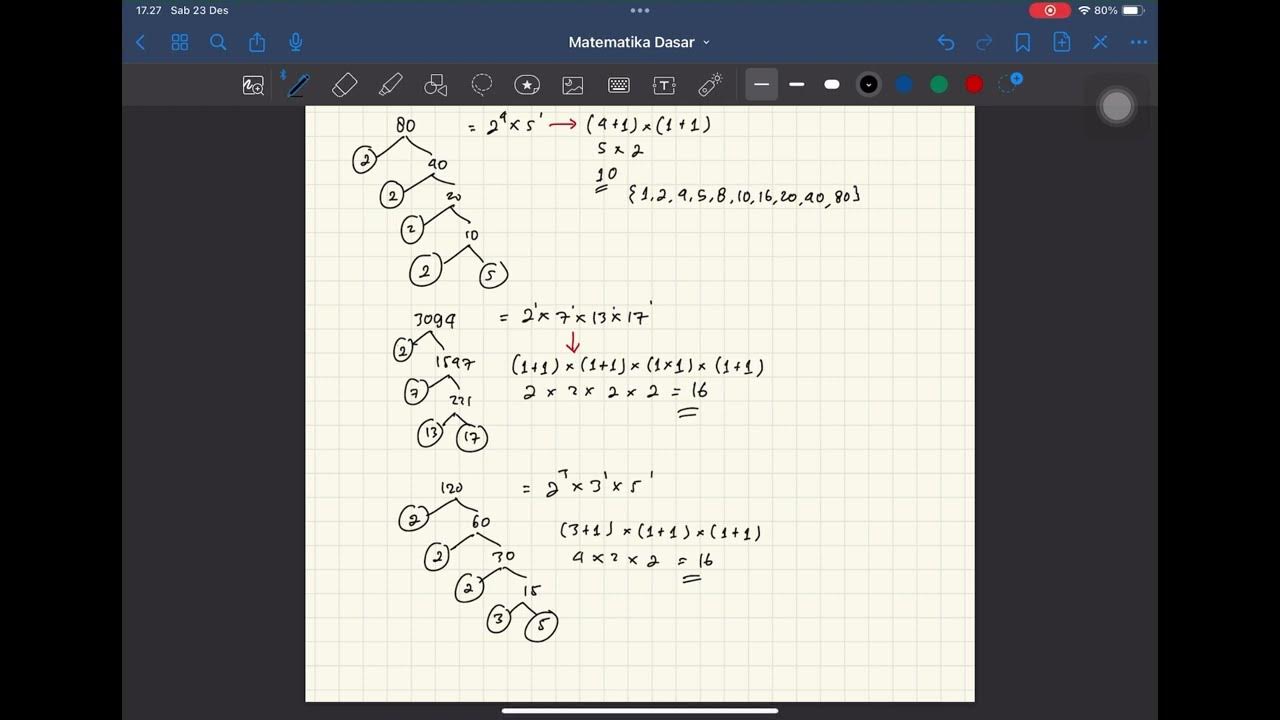Q 1-Ex 7.1-Cube and Cube Roots-NCERT Maths Class 8th-Chapter7
Summary
TLDRIn this educational video, the instructor explains how to determine whether numbers are perfect cubes using the prime factorization method. Through examples such as 216, 128, and 1000, the process of breaking down numbers into their prime factors is demonstrated. The instructor emphasizes that for a number to be a perfect cube, all prime factors must be raised to powers that are multiples of three. This concise lesson equips students with a fundamental understanding of perfect cubes and provides practical strategies for solving related problems.
Takeaways
- 😀 Understanding perfect cubes is essential for number theory.
- 🧮 The prime factorization method is the simplest way to check for perfect cubes.
- 🔢 To determine if a number is a perfect cube, its prime factorization should have all exponents as multiples of 3.
- ✅ Example 1: 216 is confirmed as a perfect cube because it can be expressed as 2^3 × 3^3.
- ❌ Example 2: 128 is not a perfect cube since its prime factorization results in an exponent (7) that is not a multiple of 3.
- 📊 Example 3: 1000 is a perfect cube, represented as 2^3 × 5^3, with all factors meeting the criteria.
- ❓ Example 4: 4656 is determined not to be a perfect cube due to its prime factors not all being multiples of 3.
- 🔍 Students are encouraged to engage with the examples to better understand the concept.
- 💡 Practicing prime factorization with different numbers will reinforce understanding of perfect cubes.
- 📅 Remember to subscribe for more educational content on mathematical concepts!
Q & A
What is the purpose of the exercise introduced in the video?
-The purpose of the exercise is to determine which of the given numbers are not perfect cubes by using prime factorization.
How is prime factorization used in checking for perfect cubes?
-Prime factorization involves breaking down a number into its prime factors. If each prime factor appears in pairs of three, the number is a perfect cube.
What is the first number checked in the exercise, and what is the result?
-The first number checked is 216, and it is confirmed to be a perfect cube as it can be factored into three pairs of prime factors.
What steps are involved in checking if 128 is a perfect cube?
-For 128, prime factorization is performed, revealing the factors do not form complete pairs of three, leading to the conclusion that 128 is not a perfect cube.
How does the instructor confirm whether 1000 is a perfect cube?
-The instructor factors 1000 into its prime factors and finds that there are complete pairs of three, confirming that 1000 is a perfect cube.
What mistake does the instructor caution against while performing prime factorization?
-The instructor cautions against making mistakes when forming pairs, emphasizing the importance of checking the factors carefully to ensure accuracy.
What is the significance of pairing factors in the context of perfect cubes?
-Pairing factors is significant because a number can only be classified as a perfect cube if all prime factors can be grouped into sets of three.
What does the instructor encourage students to do with the information learned?
-The instructor encourages students to practice the methods shown in the video and to share the content with others for better understanding.
What final number is evaluated in the video, and what conclusion is drawn?
-The final number evaluated is 4656, which is determined to be a perfect cube based on its prime factorization.
What tools does the instructor suggest using for factorization?
-The instructor suggests using prime factorization as the easiest and most straightforward method for determining if a number is a perfect cube.
Outlines

This section is available to paid users only. Please upgrade to access this part.
Upgrade NowMindmap

This section is available to paid users only. Please upgrade to access this part.
Upgrade NowKeywords

This section is available to paid users only. Please upgrade to access this part.
Upgrade NowHighlights

This section is available to paid users only. Please upgrade to access this part.
Upgrade NowTranscripts

This section is available to paid users only. Please upgrade to access this part.
Upgrade NowBrowse More Related Video

NÚMEROS QUADRADOS PERFEITOS - 8º ANO

Factorización suma o diferencia de cubos conceptos previos

BAB 3 Menentukan Faktor Positif | Matematika Dasar | Alternatifa

Factoring Polynomials using Greatest Common Monomial Factor

How to Find the LCM using Prime Factorization | Least Common Multiple | Math with Mr. J

SIMPLIFICAÇÃO DE RADICAIS | SIMPLIFICAÇÃO DE RAIZ | |RADICIAÇÃO | \Prof. Gis/
5.0 / 5 (0 votes)